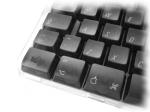
Regardless of your operating system, good practice is to put recently added/changed files in a container (let us call it transfer). Files should be accumulated in transfer until the next backup cycle. Once a backup of that container is obtained, files can finally be moved appropriately to their destined directory. The notes that follow deal with a method of automatically backing up transfer using a server or another hard-drive. It also places emphasis on back-up of Web sites — a task which can become closely-related.
Note: instructions are Linux/Mac-specific, but can be adapted to Windows
Until recently, I used to get gunzipped tar archives of all my sites from CPanel. I did this every morning. Some weeks ago I automated part of the process by getting more crucial (and frequently-changing) pages and storing them remotely. It all works as follows:
Set up a set of batch scripts (let us call them dummy1..2) which include the following commands:
cd /home/roy/Main/Transfer_Archives/Sites/Roy/
wget -r -l1 -t1 -N -np -erobots=off http://schestowitz.com/
If you are not sure what the latter is doing, type in man wget and read the documentation. Then, set up cron jobs which include the following tasks:
Get local copies of important Web pages (see above)
38 23 * * * /home/roy/Main/Transfer_Archives/Sites/dummy1
38 23 * * * /home/roy/Main/Transfer_Archives/Sites/dummy2
...
Compress all the pages
50 23 * * * tar czvf /home/roy/Main/Transfer_Archives/www-`date +%Y-%m-%d`.tar.gz /home/roy/Main/Transfer_Archives/Sites
Make a copy of compressed pages
58 23 * * * cp -rf /home/roy/Main/Transfer_Archives/ /home/server2/transfer/roy
The last line puts a copy on the SAN, just to be 100% covered. Such scripts allow you to sleep while your sites/files are being backed up.







 Filed under:
Filed under: 




 Mice are used excessively while much more precise and efficient ways of navigation exist. Generally, when using an application often enough, one needs to learn and practice commonly-used menu accelerators, e.g.
Mice are used excessively while much more precise and efficient ways of navigation exist. Generally, when using an application often enough, one needs to learn and practice commonly-used menu accelerators, e.g. 
 ver a year ago I started fiddling about with a rendering package called
ver a year ago I started fiddling about with a rendering package called 